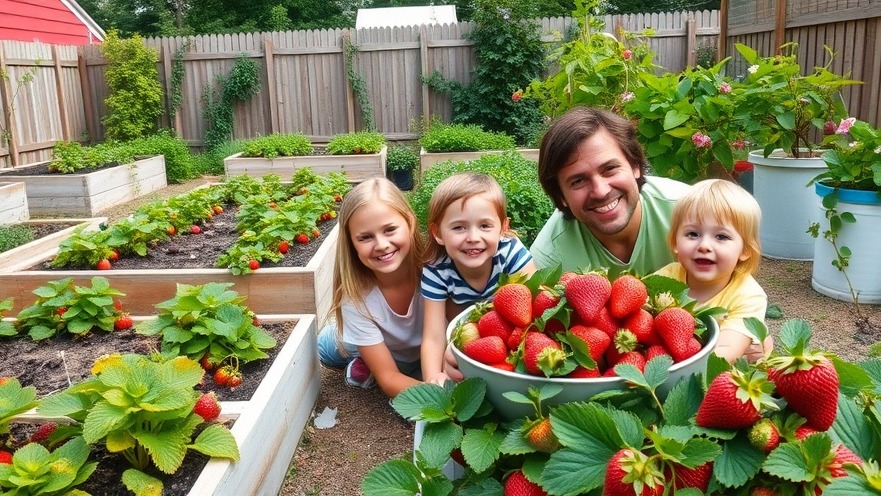
Revamping Your Garden: The Best Ways to Grow Strawberries
If you’re planning to cultivate a fruitful garden, consider starting with strawberries. These sweet, juicy fruits are not only a favorite among many but also among the easiest to grow. Known for their adaptability, strawberries can flourish in raised beds, containers, or directly in the ground, provided they have the right conditions. As a northern gardener, I’m currently relocating my strawberry patch to three well-prepared raised beds in my vegetable garden. This redesign will give my plants more space to thrive and achieve optimal production during the summer months.
Why Choose Raised Beds for Your Strawberries?
Transitioning strawberries to raised beds offers a host of benefits. Raised beds deliver superior drainage and soil control, minimizing weed competition, which is essential for a healthy berry yield. By elevating your strawberry plants, you empower them to enjoy better air circulation and easier access to sunlight. They also warm up more quickly in the spring, encouraging early growth. Furthermore, it's easier to manage diseases and pests in a raised bed, as the plants are less likely to be crowded by weeds or other unwanted flora.
Getting Started - Choosing the Right Strawberry Varieties
When it comes to growing strawberries, selecting the right variety for your climate and taste preferences is vital. We generally categorize strawberries into three main types:
June-Bearing: These yield a large crop all at once, typically in mid-summer, making them ideal for canning and preserving.
Everbearing: They produce fruit throughout the growing season, providing smaller, continuous harvests.
Day-Neutral: These are the best for active home gardens; they yield fruit continuously from spring through fall.
When choosing strawberries for your garden beds, consider experimenting with a mix of these varieties to maximize both your harvest and enjoyment.
Best Practices for Planting and Caring for Strawberries
Once you’ve selected your varieties, it’s time to prepare your planting beds. Fill your raised beds with well-drained, nutrient-rich soil. Strawberries thrive in slightly acidic conditions, with a pH between 5.5 and 6.8, so testing your soil is a must. Ideally, you should aim to have a mixture of compost for vitamins and minerals, ensuring your plants receive the right nourishment.
Additionally, spacing your strawberry plants is crucial; place them about 8–10 inches apart to maintain good air circulation. If you’re using bare-root plants, be sure to soak their roots before planting to ensure they get the necessary hydration right away. Another tip is to pinch off any flowers during the first season. While this might seem counterintuitive, it allows the plant to focus its energy on establishing strong roots instead of diverting it to fruit production.
Protecting Your Investment: Dealing with Common Pests and Diseases
Strawberries are susceptible to various pests, including birds and insects that enjoy feasting on the ripe fruit. A simple bird netting solution can save your crop from feathered threats, while keeping the beds weed-free contributes to the overall health of your plants. Mulching with straw ensures that your strawberries stay clean and dry, which minimizes the risk of rot and makes for easier harvesting.
During the growing season, make certain to provide consistent and deep watering, especially in warmer weather. Soaker hoses work particularly well for raised beds, as they deliver moisture directly to the soil without soaking the leaves, which can lead to diseases.
Future of Your Strawberry Patch
Growing strawberries can be a rewarding venture, especially when done correctly. As you plan your 2025 garden, keep these techniques in mind to ensure a fruitful harvest. Whether reminiscencing on past summers or jumping into gardening for the first time, the experience of tasting homegrown strawberries can be deeply satisfying.
For the outdoor enthusiasts among us, the journey doesn't end with the harvest. Expanding your outdoor living spaces—like installing an outdoor kitchen or enhancing your patio—can provide the ideal backdrops for entertaining family and friends while enjoying the fruits of your labor. So why not plan your outdoor transformation today?
Contact Us for Outdoor Living Recommendations
If you're located in the greater Hampton Roads area and looking to create a perfect blend of strawberries and outdoor living, do not hesitate to reach out. We can provide excellent recommendations on outdoor living professionals to help you cultivate not just your garden but also a vibrant outdoor lifestyle.
 Add Row
Add Row  Add
Add 


